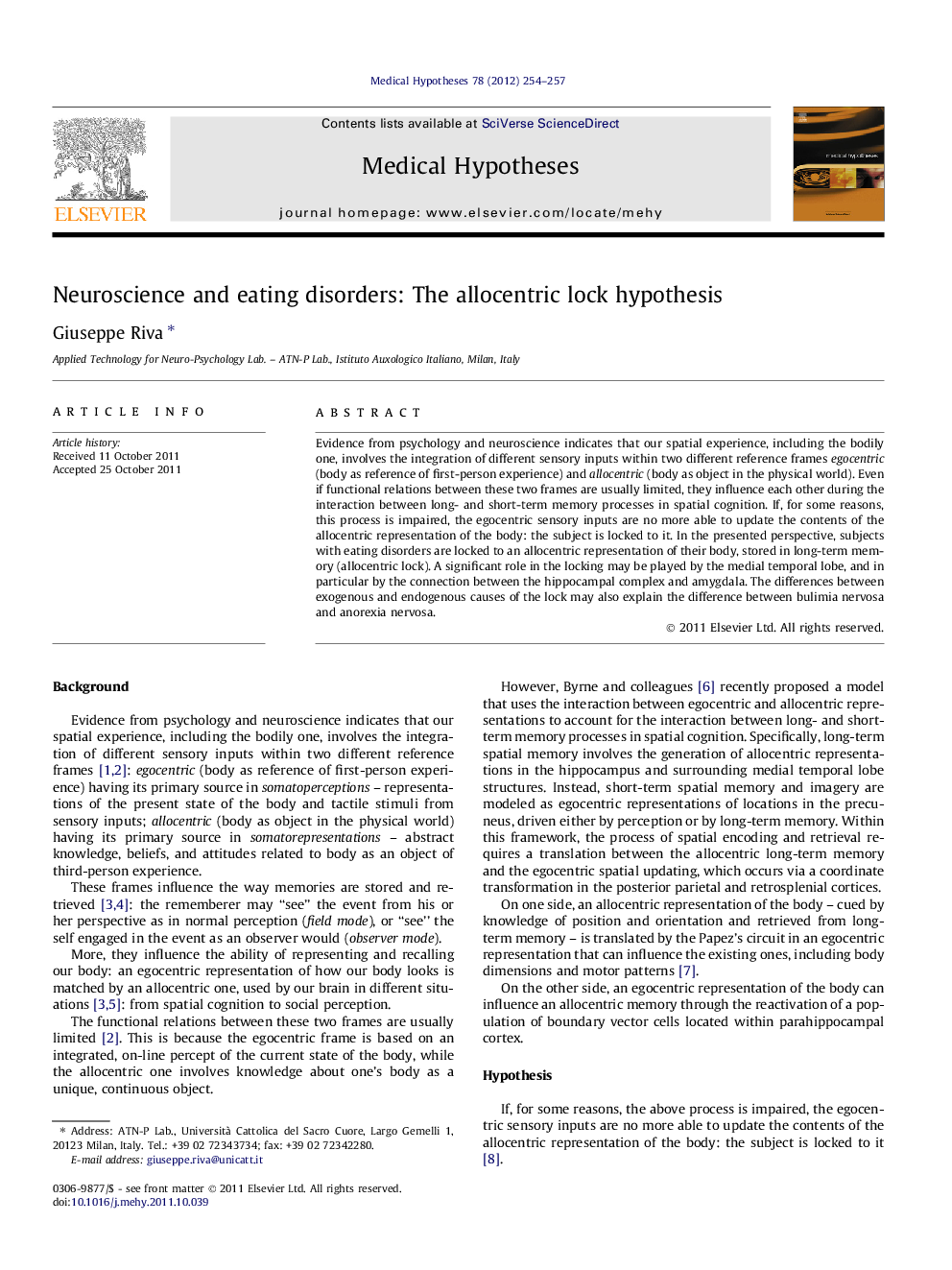| Article ID | Journal | Published Year | Pages | File Type |
|---|---|---|---|---|
| 2489542 | Medical Hypotheses | 2012 | 4 Pages |
Evidence from psychology and neuroscience indicates that our spatial experience, including the bodily one, involves the integration of different sensory inputs within two different reference frames egocentric (body as reference of first-person experience) and allocentric (body as object in the physical world). Even if functional relations between these two frames are usually limited, they influence each other during the interaction between long- and short-term memory processes in spatial cognition. If, for some reasons, this process is impaired, the egocentric sensory inputs are no more able to update the contents of the allocentric representation of the body: the subject is locked to it. In the presented perspective, subjects with eating disorders are locked to an allocentric representation of their body, stored in long-term memory (allocentric lock). A significant role in the locking may be played by the medial temporal lobe, and in particular by the connection between the hippocampal complex and amygdala. The differences between exogenous and endogenous causes of the lock may also explain the difference between bulimia nervosa and anorexia nervosa.
